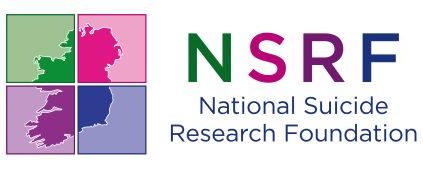B
Benzodiazepines: A type of tranquilising medication
Biostatistics: A type of statistics that looks at health sciences data
Borderline Personality Disorder (BPD): A disorder of mood and how a person interacts with others
C
Cognitive Behavioural Therapy (CBT): A type of therapy that looks at challenging and changing unhelpful thoughts and behaviours
Comorbidity: when a person has two or more diseases, illnesses or medical conditions at the same time
Contagion: The spread of a behaviour pattern, attitude, or emotion from person-to-person through suggestion, propaganda, rumour, or imitation
Cybervictimisation: A process of victimising others through the use of information and communication technologies
D
Dialectical Behavioural Therapy (DBT): A type of psychotherapy suitable for individuals with a history of multiple self-harm acts, often associated with Borderline Personality Disorder
E
Ecological study – An ecological study is an observational study defined by the level at which data are analysed, namely at the population or group.
Entrapment: The state of being caught in, or as in, a trap.
Epidemiology: The study of the causes, distribution and control of disease in a population.
I
Interpretative Phenomenological analysis: A series of sets of factors that aim to interpret the accounts of people of their personal lived experience and explicate an underlying structure in these accounts
L
Longitudinal: Studies that make comparisons over time
M
Mental Health: “A state of well-being in which the individual realizes his or her own abilities, can cope with the normal stresses of life, can work productively and fruitfully, and is able to make a contribution to his or her community”
Mental Illness or Mental Disorders: There are many different mental disorders, with different presentations. They are generally characterised by a combination of abnormal thoughts, perceptions, emotions, behaviour and relationships with others
P
Parasuicidal behaviour: “any non‐fatal, serious, deliberate self‐harm with or without suicide intent” – J.M.G. Williams
Pharmacological: Relating to the branch of medicine concerned with the uses, effects, and modes of action of drugs
Postvention: Services, activities and supports targeting the needs of individuals personally affected by a suicide, to aid them through the bereavement and grieving process
Protective Factors: Factors that reduce the risk of suicide
Psychiatry: A branch of medicine focused on the diagnosis, treatment and prevention of mental, emotional and behavioural conditions
Psychology: The scientific study of the mind and behaviour
Psychosocial: Relating to the interaction between psychological and social factors
Psychopathology: Refers to the study of mental disorders in terms of their causes, development, course, classification, and treatment
R
Risk Factors: Factors that increase the likelihood of something, in this case, suicide or self-harm
S
Selective and indicated interventions – Target individuals who are at heightened risk of suicide or are actively suicidal; designed to reduce risk of suicide among these individuals
Self-Harm: “an act with non-fatal outcome in which an individual deliberately initiates a non-habitual behaviour, that without intervention from others will cause self-harm, or deliberately ingests a substance in excess of the prescribed or generally recognised therapeutic dosage, and which is aimed at realising changes that the person desires via the actual or expected physical consequences.” The World Health Organisation (WHO)
SSRIs: ‘Selective Serotonin Re-uptake Inhibitors’ are a type of anti-depressant.
Suicidal behaviour: Suicidal behavior includes suicidal ideation (thoughts of ending one’s life), suicide attempts (the actual event of trying to kill one’s self), and completed suicide (death occurs). Suicidal behavior is most often accompanied by intense feelings of hopelessness, depression, or self‐destructive behaviors (parasuicidal behaviors) – Kathryn Castle PhD, Richard Kreipe MD, in Pediatric Clinical Advisor (Second Edition), 2007
Suicidal Ideation: Thinking about suicide or wanting to take one’s own life
Suicide: “The act of deliberately killings oneself” The World Health Organisation (WHO)
Suicidology: The study of suicidal behaviour – trying to understand why people take their own lives and how this can be prevented
Synergistic: Relating to the interaction or cooperation of two or more organisations, substances, or other agents to produce a combined effect greater than the sum of their separate effects
T
Therapeutic Range: The dosage range expected to achieve the desired clinical affect of the drug
U
Universal Interventions – Target individuals who are at heightened risk of suicide or are actively suicidal; designed to reduce risk of suicide among these individuals

